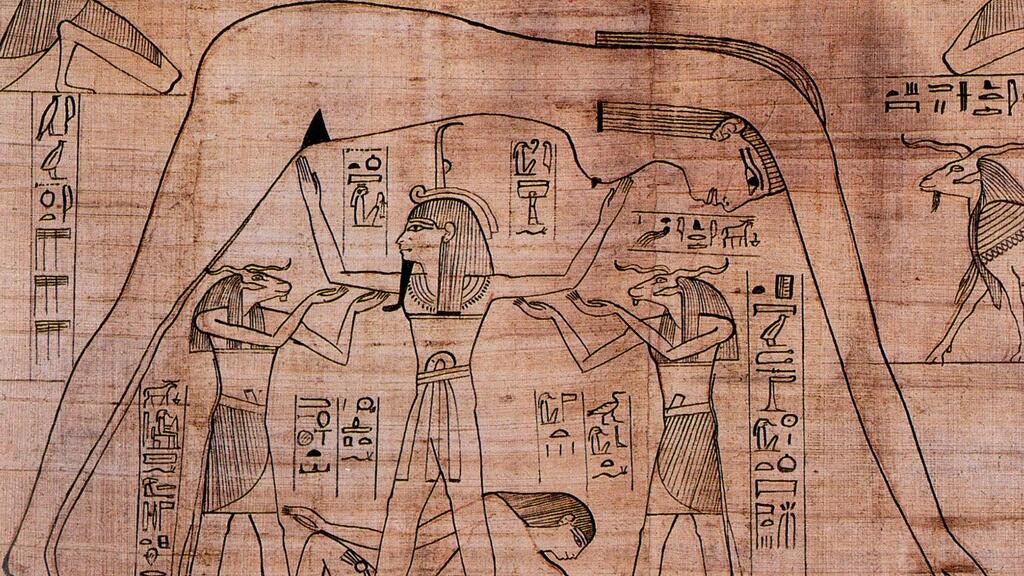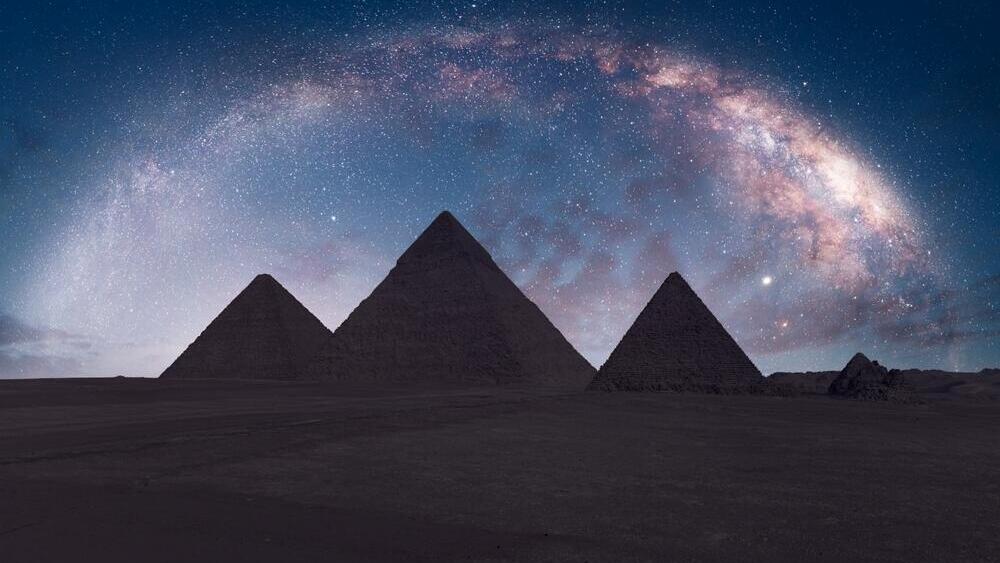A new study by Dr. Or Graur of the University of Portsmouth in the UK suggests that depictions of the sky goddess Nut in ancient Egyptian art may represent the Milky Way galaxy. Published in the Journal of Astronomical History and Heritage, the study analyzes cosmological symbolism found in tomb and sarcophagus art and explores how Egyptians may have visualized the galaxy thousands of years ago.
Dr. Graur examined 555 ancient Egyptian coffins, some dating back 4,600 years, focusing on artistic representations of Nut. One sarcophagus in particular stood out: that of a priestess named Nesitanebetashru, who lived during Egypt’s 21st Dynasty.
A long, thick wavy line runs across Nut’s body on the coffin, flanked by evenly spaced stars above and below it. “I think that the undulating curve represents the Milky Way and could be a representation of the Great Rift—the dark band of dust that cuts through the Milky Way's bright band of diffused light,” Dr. Graur told Discover magazine.
Dr. Graur proposes that the wavy arc often found in depictions of Nut symbolizes the galaxy—specifically, the Great Rift, the prominent dark dust lane that bisects it. He argues that some coffin illustrations of Nut include stylized interpretations of the galactic plane and may reflect ancient awareness of the Milky Way’s structure.
Get the Ynetnews app on your smartphone: Google Play: https://bit.ly/4eJ37pE | Apple App Store: https://bit.ly/3ZL7iNv
Nut, one of the oldest deities in the ancient Egyptian pantheon, was considered the guardian of the sky. Her brother Geb symbolized the earth. In burial art, Nut is often shown as a naked, arched woman adorned with stars and suns, bending protectively over the deceased — a symbol of the heavens and her role as a celestial guardian.
She frequently appears in funerary contexts due to her mythological role in shielding the dead on their journey to the afterlife.
2 View gallery


Depiction of Nut arching above several Egyptian gods supporting her
(Photo: British Museum)
In the tomb of Ramses VI, the ceiling of the burial chamber is split into two panels titled The Book of Day and The Book of Night, each depicting Nut separated by a wavy line. Similar curving lines cross the astronomical ceiling of Pharaoh Seti I’s tomb, with stars and celestial patterns running through them.
According to Dr. Graur, the level of detail in these depictions includes thick strands of dust winding through the starry sky — consistent with the Milky Way’s visible features. He argues that the galaxy’s distinctive light and darkness may have reinforced Nut’s identity as sky goddess in Egyptian mythology.
In The Book of Nut, also known as The Fundamentals of the Course of the Stars, the goddess gives birth to the sun each morning and swallows it again at night.


